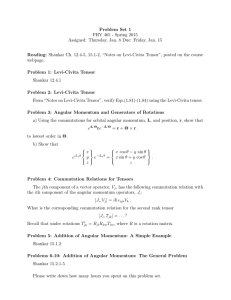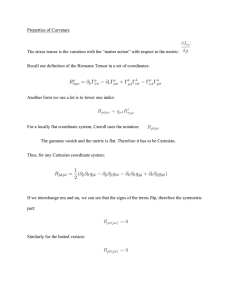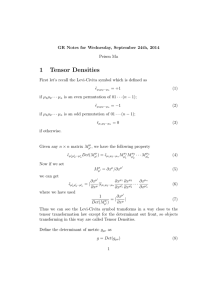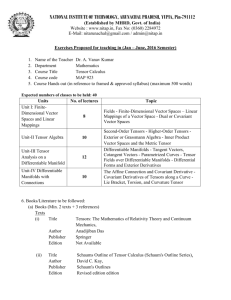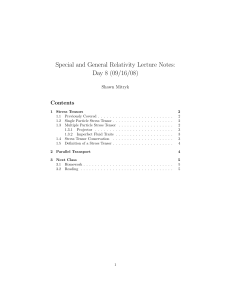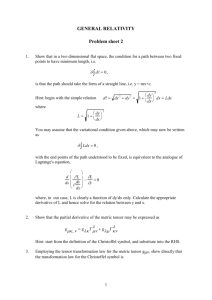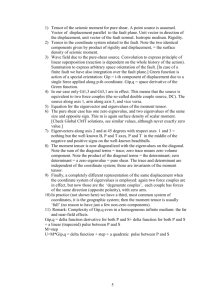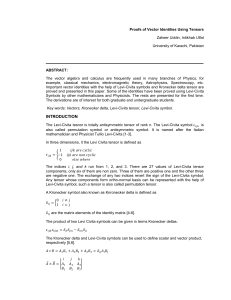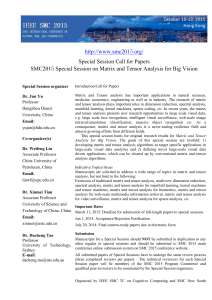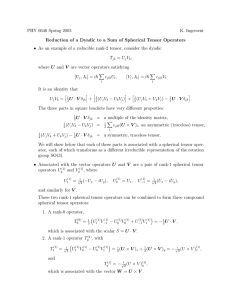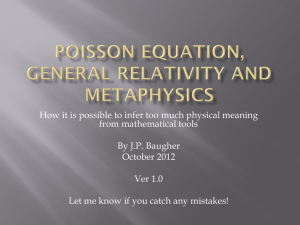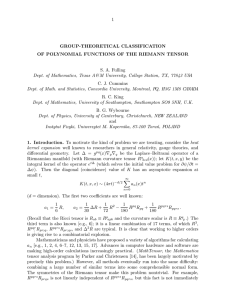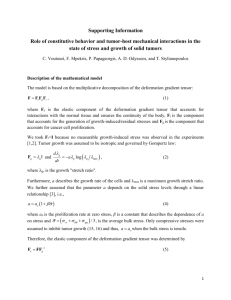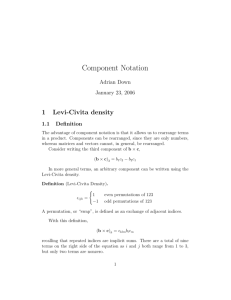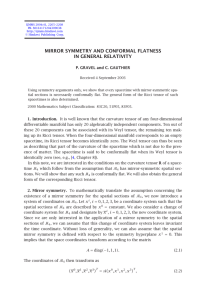A.2. The Levi-Civita Tensor Density
advertisement
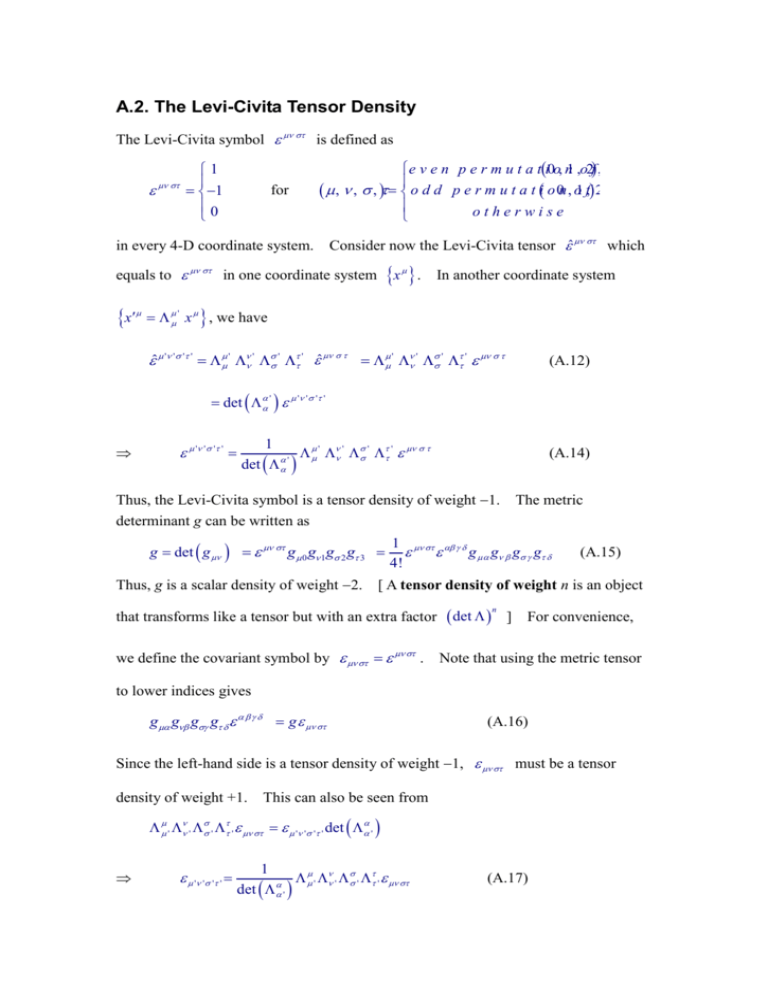
A.2. The Levi-Civita Tensor Density The Levi-Civita symbol is defined as 1 1 0 for e v e n p e r m u t a ti0o, n1 ,o2f , 3 , , , o d d p e r m u t a t i o 0n , o1 f, 2 , 3 otherwise in every 4-D coordinate system. Consider now the Levi-Civita tensor ˆ which x . equals to in one coordinate system x In another coordinate system ' x , we have ˆ ' ' ' ' ' ' ' ' ˆ ' ' ' ' (A.12) det ' ' ' ' ' ' ' ' ' 1 ' ' ' ' ' det (A.14) Thus, the Levi-Civita symbol is a tensor density of weight 1. The metric determinant g can be written as g det g g 0 g 1g 2 g 3 Thus, g is a scalar density of weight 2. 1 g g g g 4! (A.15) [ A tensor density of weight n is an object that transforms like a tensor but with an extra factor det n ] For convenience, we define the covariant symbol by . Note that using the metric tensor to lower indices gives g g g g g (A.16) Since the left-hand side is a tensor density of weight 1, must be a tensor density of weight +1. This can also be seen from ' ' ' ' ' ' ' ' det ' ' ' ' ' 1 ' ' ' ' det ' (A.17) det ' ' ' ' ' Finally, it is easy to see that 1 g and g transform like tensors.


